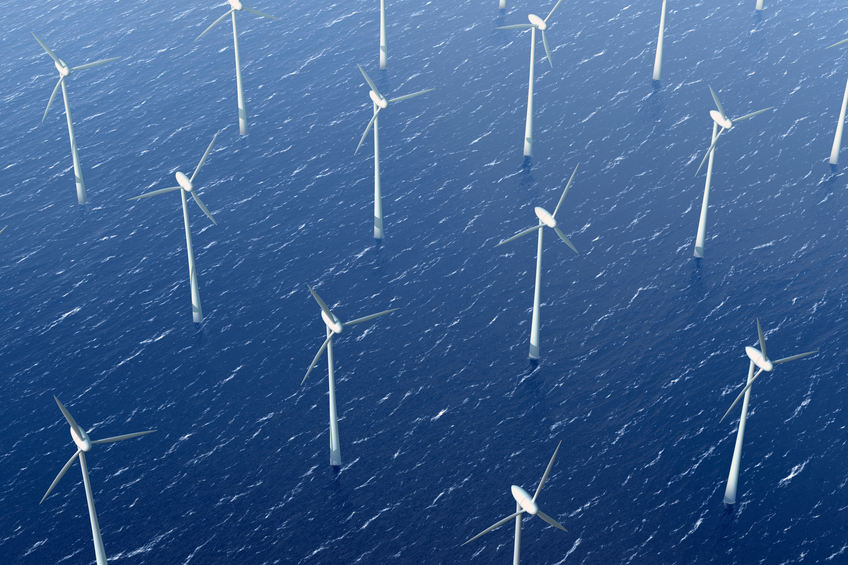Siemens’ pending acquisition of Gamesa will have wide-ranging impacts on the wind industry, creating the largest wind turbine manufacturer in terms of annual market share. One of the major sticking points to these negotiations has been the future of Adwen – the 50/50 joint venture between Areva and Gamesa.
Siemens has enjoyed overwhelming market share and leadership in the offshore turbine supply segment for many years, and acquiring the Adwen offshore business presents a redundant addition to its business and potential for anti-trust regulatory hurdles that could foil the negotiations.
The result of the negotiations is a three-month interval for Areva to choose between three options: a put option to sell the Areva stake, a call option to purchase Gamesa’s 50% interest or the option to sell the entire business to a third party via a drag-along right for Gamesa’s stake. Areva is now one-third of the way through this evaluation period, and numerous companies are rumored as potential suitors for the Adwen business, including GE, Senvion, Mitsubishi Heavy Industries and Mitsui, among others.
Senvion has strong motivation to acquire the Adwen business, as the German manufacturer finds itself on the outside looking in at the “Big 3” in the offshore industry. Senvion has a long and reputable history in the offshore market, dating back to 2003 when the 5 MW offshore turbine was introduced by Senvion (then known as Repower) as the largest turbine in the world. In the meantime, the company has built the largest fleet of offshore 5 MW+ turbines operating in the world.
However, competitors have since eclipsed this 5 MW benchmark, and Senvion now finds its 6.2 MW offering trailing the 8 MW products being deployed by MHI/Vestas, Siemens and Adwen. Likewise, Senvion’s order book in offshore is a mere fraction of its next closest rival, so acquiring Adwen’s sizable French offshore backlog would provide a significant boost to Senvion’s growth prospects.
A GE acquisition would present a significant level of competitive intrigue and cement the firm’s place in the global offshore market. After two false starts into the industry, GE’s joint venture with Alstom marks the most serious commitment to the offshore market by the U.S. industrial giant, supported by over 1.5 GW of orders in French waters. Acquisition of Adwen’s business would give GE access to nearly the entire French offshore backlog, allowing for local supply-chain optimization. This move would also fast-track GE’s pursuit of an 8 MW turbine, as the 6 MW Haliade is quickly being outpaced by the 8 MW offerings from Siemens and MHI/Vestas.
A third buyer type may also emerge from the ranks of Asian industrial giants, many of whom have also experienced a number of false starts into the offshore industry. Past endeavors into offshore turbine supply from the likes of Samsung, Hyundai, DSME, Hitachi, Goldwind, Mingyang and United Power have been met with limited commercial success and have caused these original equipment manufacturers (OEMs) to retreat from the booming European offshore segment. An Adwen acquisition by an Asian industrial giant would allow these companies to fast-track product development by gaining access to an established 5 MW product and an 8 MW offering that is in late stages of research and development.
The Adwen track record in western markets would also serve as a competitive differentiator, as it looks to supply the expected growth in the domestic offshore markets in Asia. A looming question for an Asian acquisition is the potential that the French government may block access to the offshore tender that has been awarded to Adwen.
The alternatives to selling to a third party include Areva selling the Gamesa share to the newly formed Siemens/Gamesa entity or purchasing Gamesa’s stake and establishing an Areva offshore wind business. Selling to Siemens would be less lucrative than a third party, as Siemens views the Adwen technology as unnecessary to its offshore growth prospects. Areva is also unlikely to assume full ownership, as the French state-owned industrial giant is in the midst of a massive restructuring that includes head count reductions and the sale of a majority stake in its nuclear reactor business to EDF.
This development is yet another ripple in the dynamic competitive environment in offshore wind over the past five years. In that time frame, the industry has seen a significant amount of mergers and acquisitions activity, technical evolution, rapid market growth, strategic entries, and closely followed market exits. As turbine sizes continue to grow, so do the risks of catastrophic failure, precluding any companies without a strong balance sheet. The result is a highly consolidated industry reserved for only the largest companies.
As Areva mulls its options, the final decision will likely create another offshore giant and present further barriers to entry by the OEMs not currently active in the offshore market.
Author’s note: Aaron Barr is a senior consultant at MAKE. He can be reached at ab@consultmake.com.





Interesting intellectual exercise, but some unfortunate conclusions based on a lack on tangible knowledge of ongoing events. EU competition authorities are likely to block (or at least initially object) to a Siemens / Gamesa takeover of the Areva stake in Adwen. This is the only reason why other possibilities are in play. Siemens / Gamesa does not want to enable a competitor like GE, who is only interested in the 1.5GW of French tenders and to use the AD 8-180 as a techno,logy hedge against their own plans to scale the Haliade to 8MW. A Vestas acquisition is simply a… Read more »